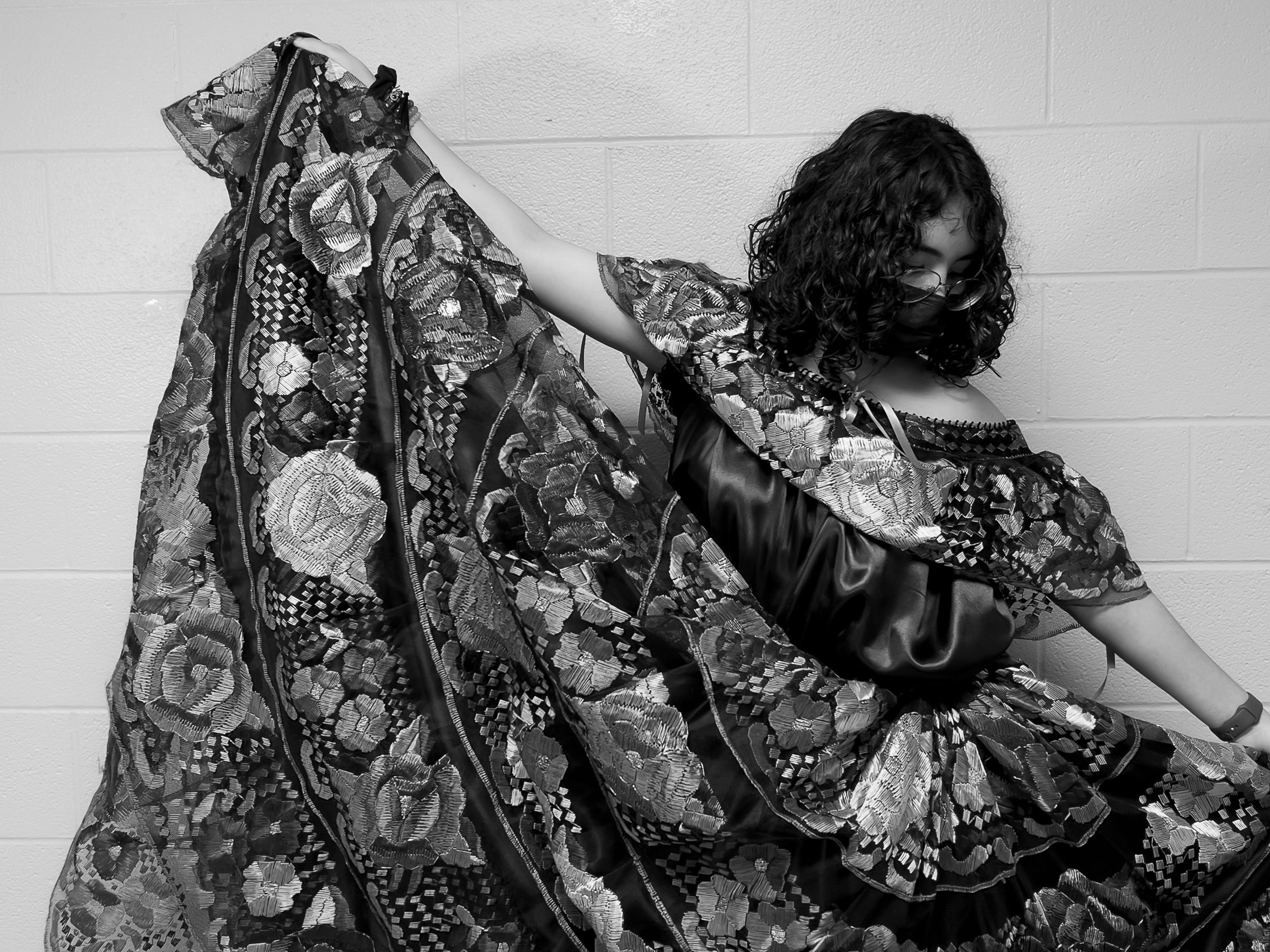We Are America
My Quince Dress
By Yamilet

Colorado River Collegiate Academy, Bastrop, Texas
Growing up, I always heard how excited my sister and cousins would be for their quinceañera. (A quinceañera, or quince, is a tradition in Mexico where once a girl turns fifteen, she has a celebration to show that she is moving to womanhood.) But I never really had a big picture in my mind where I would plan out everything about my quince. To be honest, I didn't feel I deserved to be part of this kind of tradition because it was something so special to my parents. I didn't feel worthy.
My parents asked me to wear their traditional Chiapaneca dress that was from where they were born in Chiapas. I said, “Sure,” to make them satisfied. I found it pretty, but just saw it as another quince dress that every girl gets. I didn't see how important it was for them.
The closer it got to my trip to Mexico to get my Chiapaneca dress, the more tired I got about people asking if I was excited for my quince. I just said, “Yeah,” and tried to move on from the topic. At a young age, I figured that I didn't look or act like the “typical Mexican girl,” the ones you see dancing in parties. I felt like the kid in the back of a party not knowing what to do.
Once July came around, we went to visit an uncle in Corzo, Chiapas, where the Chiapaneca dress originated. He liked the idea of using a traditional dress and asked if I was excited. I shrugged it off with another yes. I was curious if I would even end up liking it. We drove around and he took us to a statue of a lady wearing a Chiapaneca dress. She was holding it up with one arm and in the other hand held an abanico, which means “fan” in Spanish. I was surprised. I found it pretty how the colors were so bright even though the statue looked pretty old. After seeing the statue I started to think that the dress idea wasn't the worst. Maybe my dress would be amazing.
The next day we went to the markets to see if they had any Chiapaneca dresses. It took us a while to find the right store that made them the way we wanted. When we went to the first store and saw a dress I did a circle around it, seeing all its details. It made me feel again like I did when I saw the statue–maybe the dress wasn't a bad idea. We walked around the market for hours, and with every dress I saw, even though we only stayed for a short moment, I was able to see the amount of stitching done to make each one. I was impressed that they looked more detailed than they had in photos. Still, we were running out of stores–we hadn’t found a dress with the traditional embroidery that we wanted.
I was going to have to pick one of the dresses we had already seen when we came across a store that had traditional dresses and accessories right in front of our eyes. Once we entered, I saw the dress we were looking for. It was black on the bottom layer, and the stitching of the colorful flowers was incredible. The flowers were so vibrant, and they felt silky and smooth.
I was amazed that I was now feeling that I wanted to wear this dress and be able to honor my parents' culture. I was able to understand that my quince isn't just another birthday party, but a tradition that my parents want me to be part of, and the dress is not just “another dress that every girl gets,” but a dress that my parents gave me the honor to wear.
© Yamilet. All rights reserved. If you are interested in quoting this story, contact the national team and we can put you in touch with the author’s teacher.
- Family
Tags: